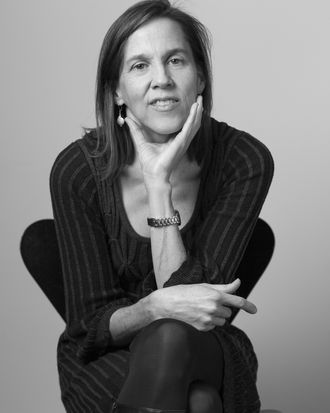
For as long as she can remember, Jennifer Homans has been interested in the why of ballet: Instead of merely just doing, the process of understanding the history of dance has always appealed to her. Now, after years of being a professional dancer and teacher, Homans has been named the inaugural Van Cleef & Arpels chair in the history of dance at New York University. Her role will focus on teaching students the history of dance within the College of Arts & Science.
“It’s not for people who are in a professional academy trying to become dancers so much as for your average person in the world who may go off and do completely different things but will now have a chance to take courses and see that this is as important as the history of art, as important as the history of music, as the history of literature,” says Homans. “All of these things are taught widely at universities, but the history of dance is underrepresented. So this chair establishes the history of dance in a way that gives it both prestige and a place at the table in the liberal arts.”
We spoke with the new chair about what drew her to ballet and what she hopes this new program will mean for the history of dance.
What drew you to ballet initially?
I was drawn to it as a child. I was very shy, and I was taken with the art form. It had two qualities I loved: I didn’t have to talk, and the other was very emotional — if you really practiced it and devoted yourself to it, you got better. There were demonstrable results, which was something that appealed to me. You know, if I work hard, I’ll get better. I was very taken with the whole sort of discipline of it.
And now, teaching the history of it and dance, what continues to surprise you?
I continue to be surprised by people’s fascination with dance. Dance is universal. Anybody who moves is interesting to me. I’m hoping that we can expand that field beyond my expertise and I’ll be able to learn a lot from other people that I can bring into this.
What are you eager to add to the curriculum?
One thing I’m excited about developing is a foundation course in dance. I see the history of dance as cultural and intellectual, so what are the ways that we’re going to think about how to write about this art form, which is really difficult to write about? That’s an act of translation; it’s not just you looking at it and writing it down. It’s not so direct. It’s a physical art. It’s an oral tradition, a physical tradition. It’s passed on from dancer to dancer. There are some notation systems, but they’re not widely used, and they’re unable to encompass the great breadth of dance as it exists in most cultures.
I’m also excited about getting students out into the city and to see things. It’s important to be in a theater and also to see that dance is all around you, everywhere. If you start to look at the street as a kind of canvas for a dance, it becomes a whole different place because you’re starting to look at the relationships between people and how they feel about each other. What are their bodies telling you?
Why is dance not always thought about intellectually? People learn how to dance but not so much learn about it.
I was always that person in the dance studio who would run out afterward and get a book to try to understand, What are we doing? Why are we doing it? I just couldn’t find enough books. Dance is very much about the present moment and about doing; there aren’t as many texts. Universities are driven by text, so introducing an oral tradition is admittedly quite difficult because you can’t always pull it up and look at it. You have to go out into the street or into the theater or wherever it is you’re going to see it, so it’s hard.
Who is this program going to appeal to?
There are always people who come to a class that involves dance because they are in some way themselves dancers, whether professional or otherwise. Then people come through the history of art, anthropology, and neuroscience. I hope this will bring in even more because we’ll get more visibility.

